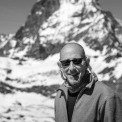
mgrayson3
Members-
Posts
975 -
Joined
-
Last visited
-
Again, the old question: which one lens to carry
mgrayson3 replied to Einst_Stein's topic in Leica S System
Either 24, 70, or 120, depending on where I was. Before the 24 came out, I was a 35 shooter. Never felt comfortable with the 30 or 45. I think the size and weight of the 45 gets to me. -
Indeed. Perhaps I should have said tilt the camera or change a lens. 😊
-
I decided on the 2-tripod solution: the tall Gitzo 3 with center column for height and the 3-section 5-series for maximum stability. The Giant satisfies both criteria, but is just too heavy to carry. One advantage of the center column is that even with the camera at 8 feet, you can make setting changes without a ladder by lowering the column. With the Giant at 8 feet, you either need to shorten the legs or use a ladder. I almost always take the 5-series. It's addictive. For the S, I sometimes take a RRS 1-series as a focusing aid - to hold the camera during magnified live view.
-
24mm, 120mm Nothing else is close.
-
I am not a portrait photographer, but I know one who is a (very) long time Leica S (006) and (007) shooter. Recently, he's been using the SL2 with Sigma 85/1.4 for a lot of shots, and finds it more than good enough. The Leica S files are still better, but the difference rarely matters. He'll probably get his hands on an SL3 soon and we can have a shootout with my copy of the S3. I predict better in-focus keeper rate with the SL3 😆. We'll see!
-
It's worth remembering that prints from large format film undergo much less magnification than ones from digital sensors. Achieving perfect focus on ground glass may not be fun, but it has a larger margin of error, despite the shallow DoF. (I envy your eyesight, BTW!)
-
My 2 cents: It's been a long time since I relied on AF of any system (except those with eye-detect). Shoot the S in live-view, turn on focus peaking, go magnified and either focus manually at landscape distance or focus with my body (rock back and forth) at portrait distance. This prevents focusing on the glasses or eyebrows by watching the plane of focus rather than a particular detail. Even the most accurate AF won't tell you exactly WHICH point it's focusing on. Good portrait photographers do this automatically through the OVF, but I never got that good. Matt
-
The Elpro for the R 100/2.8 works well on the S 120/2.5 and yields a credible 1:1. The only thing you need is a step-down ring. The Elpro for the S 180 is lovely for close, but not macro, images. The Maimiya 645 120/4 Macro is an excellent and inexpensive 1:1 option, even without bellows.
-
Usability is annoying - it keeps me from using my favorite cameras. I loved the S(006), but once I used the (007), I couldn't go back, despite (slightly) preferring the base ISO (006) results.
-
I also found the focusing better. Some lenses at some distances were always problematic on the 006 and 007. I got used to manually checking focus with live view. I noticed the better accuracy through not needing to correct as often. Leica had to really improve the AF to deal with the higher resolution. The early beta S3's did quite badly. I'm glad they waited to release it until it was an actual improvement over the 007.
-
What is the most exotic lens you've used on the S system and why ?
mgrayson3 replied to Pierre68's topic in Leica S System
Pentax 67 400/4. Makes the Leica look like a Sony A7. (I have the 400/4 ED/IF, which is a much better and heavier lens, but doesn't look as menacing.) But the most exotic has to be the Zeiss 350/5.6 Superachromat, seen here with the APO 1.4 XE And, of course, Soup - showing his enthusiasm for the Zeiss (used here without the 1.4 XE) Matt -
Why don't we talk about the lenses like the M folk?
mgrayson3 replied to dritz's topic in Leica S System
I agree about the 200/2.8 APO. The 300/5.6 ULD is a great lens, too. The Zeiss 250/5.6 and 350/5.6 Superachromats are also amazing on the S. But anything in the existing S range is not going to compete. This is taken with a Hassy X2D, and is a tight crop, but it shows what the 300/5.6 ULD can do. Matt -
My 2p, The best metaphor I can think of for this question is audio. There is a long chain of performer -> performance -> instruments -> mics -> recording medium -> sound engineers -> producers -> delivery format -> data retrieval -> signal formation -> amplification -> sound reconstruction -> listening environment -> consumer. Any one of these can be the factor that limits quality/enjoyment/marketability. Most of those links have prices attached, although the consumer can't change many of them. Changes in the consumer's utility function change which links in the chain can be most effectively improved. (FWIW, these days I care about the first two and will listen from YouTube on my phone's speaker. I used to have 6' tall planar speakers and 500W Monoblocs. Tastes change.) That doesn't mean that the question is unanswerable, it just means that a LOT of other variables need to be fixed or constrained for the question to be meaningful. I actually did take the same images with an S(007) and an S3 (same tripod and lens and within a minute of each other) to try to see at what print size I could tell a difference with a loupe, from 12", and from viewing distance. But that's with *my* printing techniques, which are probably far from the best. So what did I learn? Not much, other than that if I were printing 3 meters wide, I'd want the S3. Matt
-
The single best piece of advice concerning equipment. I'm glad the SL2 works for you. Other people I know who use it love it.











